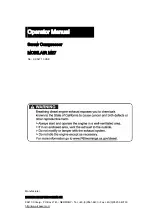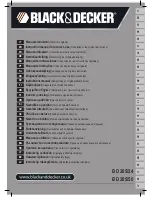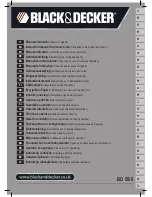
8
ASSEMBLY
INSTALLING THE DIPSTICK
Remove the plastic shipping plug from the oil fill
hole. Remove the dipstick from the poly bag and
push it into the oil fill hole (Fig 3).
WARNING.
You must replace the plastic
shipping plug with the dipstick. Failure
to do so may result in injury.
FILLING THE COMPRESSOR WITH OIL
WARNING.
Do not attempt to start the
air compressor without first adding oil to
the crankcase. Serious damage can
result unless filled with oil. The pump is
shipped without oil from the factory. Only
use non-detergent oils since
multi-viscosity motor oils leave carbon
deposits on pump components, thus
reducing performance and compressor
life.
WARNING.
Drain the tank to release all
tank air pressure before removing the
dipstick. Be sure the air vent in dipstick
(Fig.3) is free from debris. If air vent
is blocked, pressure can build in
crankcase causing damage to the
compressor and possible personal injury.
Remove the dipstick by twisting it upwards by
hand. Fill the compressor pump with an air
compressor oil such as SAE-30 non-detergent (API
CG/CD Heavy Duty) oil at slow intervals, Fig.4,
until the oil reaches between the minimum and
maximum marks on the dipstick (Fig.3). Take care
not to exceed the maximum mark. Use SAE-10
during extreme winter conditions.
LOCATING THE AIR COMPRESSOR
This compressor should be positioned on a stable,
flat surface (or one with a maximum inclination of
15º), Fig.5. Ensure that it is completely stable.
Do not cover or box in the compressor. Always
position it with good all round ventilation.
MAX
MIN
AIR
VENT
Fig. 3
Fig. 4
15°
Fig. 5






































